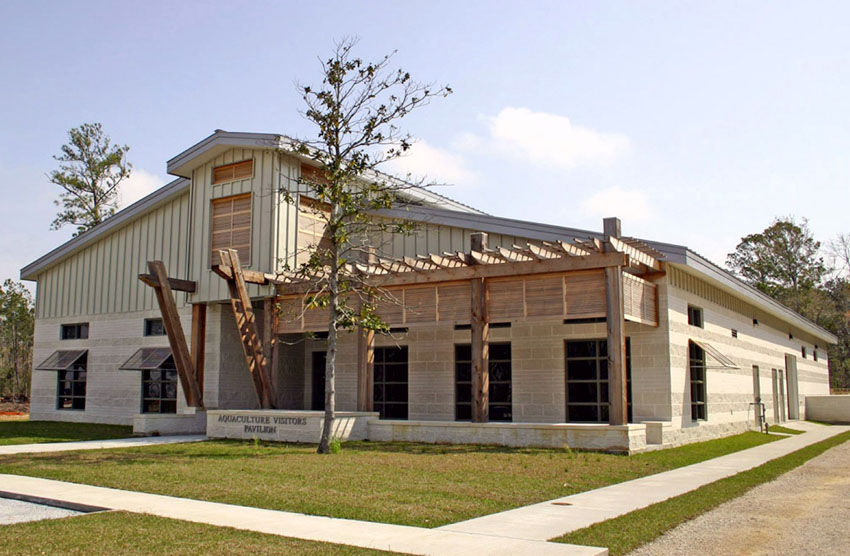Southern Miss Begins Construction on State-of-the-Art Oyster Hatchery
Mon, 08/25/2025 - 09:41am | By: Gabriela Shinskie

The University of Southern Mississippi (USM) has begun construction of a new oyster hatchery that aims to help alleviate the decline in oyster harvests along the Mississippi Gulf Coast. The hatchery will be located at USM’s Gulf Coast Research Laboratory (GCRL) Thad Cochran Marine Aquaculture Center (TCMAC) Cedar Point campus in Ocean Springs, Miss. It will be capable of producing up to one billion eyed larvae per year for use in restoration and research, with completion expected in late summer or early fall 2026.
In 2015, then-Gov. Phil Bryant established the Governor’s Oyster Council on Restoration and Resiliency to address the state’s declining oyster populations and chart a sustainable path forward. Southern Miss partnered with state and federal agencies to secure $14 million from the Mississippi Legislature and the RESTORE Act—administered by the Mississippi Department of Environmental Quality (MDEQ)—between 2016 and 2020 to build the state-of-the-art recirculating hatchery and research center.
Dr. Reginald Blaylock, TCMAC director, expressed his enthusiasm for the project’s launch and its potential to contribute to the state’s economic development.
“We are excited to finally have this project underway. We thank MDEQ and the state for their commitment to this project and for seeing it through the long path it’s taken. We are confident that the research done in this new hatchery will expand opportunities in the oyster industry for both public and private stakeholders,” said Blaylock.
Mississippi has experienced a steep decline in oyster populations due to overharvesting, disease, extreme weather, the Deepwater Horizon oil spill and prolonged openings of the Bonnet Carré Spillway. These challenges caused a drop in oyster harvests from Mississippi public reefs—from 500,000 sacks in 2004 to zero in 2019. Between 2019 and 2024, the state harvested virtually no oysters from its public reefs.
The new hatchery will use a closed, recirculating system that is isolated from environmental variability to support restoration and research. The facility will enable replicated experiments to address challenges related to larviculture, disease, genetics and reproduction that constrain growth in the oyster industry.
Oyster aquaculture holds promise for restoring natural populations through restocking programs and driving economic growth through both traditional on-bottom culture and innovative off-bottom methods, in which oysters are suspended in cages or bags. A reliable supply of high-quality oyster seed is essential for these efforts. The hatchery will help meet this need by developing technologies that support producers and workforce development.
Dr. Kelly Darnell, GCRL director, highlighted the hatchery’s alignment with the university’s leadership in coastal and marine research.
“The new oyster hatchery and research center will further GCRL’s mission of advancing scientific discovery to benefit society and enable us to be a continued resource for the state. This state-of-the-art facility will allow our researchers and students to develop and test new and innovative technologies and achieve even greater advances in aquaculture,” said Darnell.
Southern Miss continues to invest in aquaculture research through partnerships with local communities, schools and government stakeholders. The university’s commitment to this field has inspired many students to pursue careers in aquaculture and respond to the growing concern over oyster populations. The new hatchery will provide hands-on learning and research opportunities for both undergraduate and graduate students.
The hatchery reflects USM’s ongoing commitment to advancing the Blue Economy.
This project was paid for with federal funding from the U.S. Department of the Treasury and the Mississippi Department of Environmental Quality under the Resources and Ecosystems Sustainability, Tourist Opportunities, and Revived Economies of the Gulf Coast States Act of 2012 (RESTORE Act). The statements, findings, conclusions and recommendations are those of the author(s) and do not necessarily reflect the views of the Department of the Treasury or the Mississippi Department of Environmental Quality.